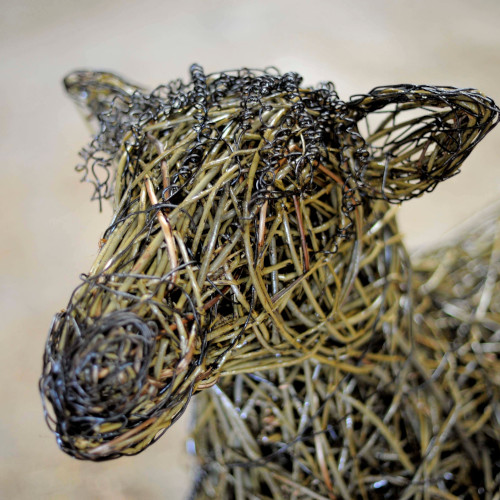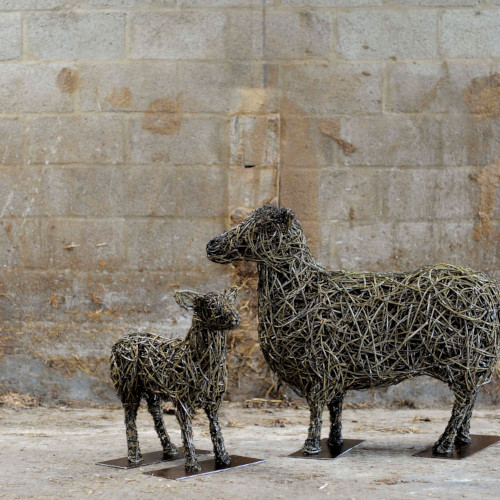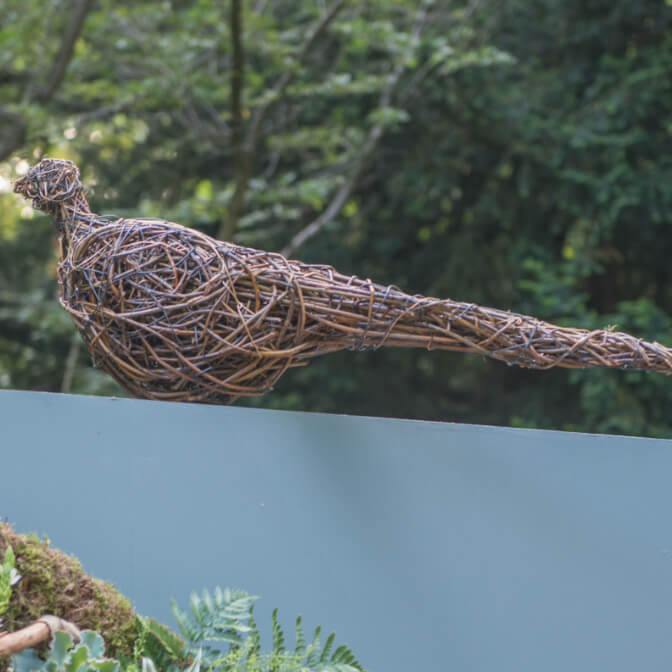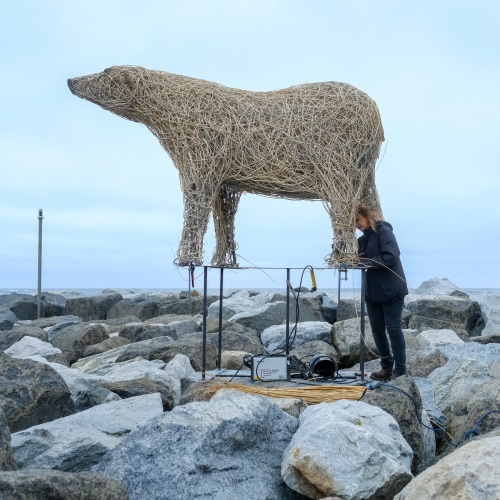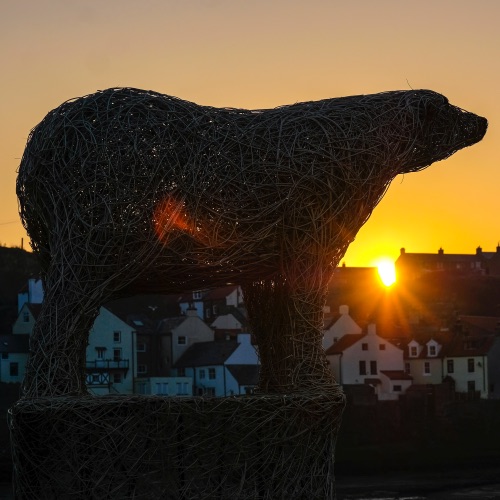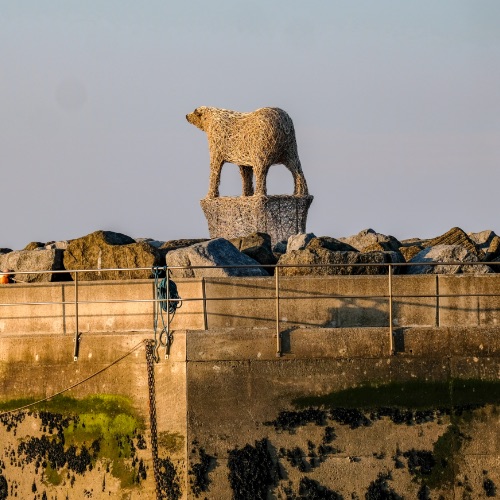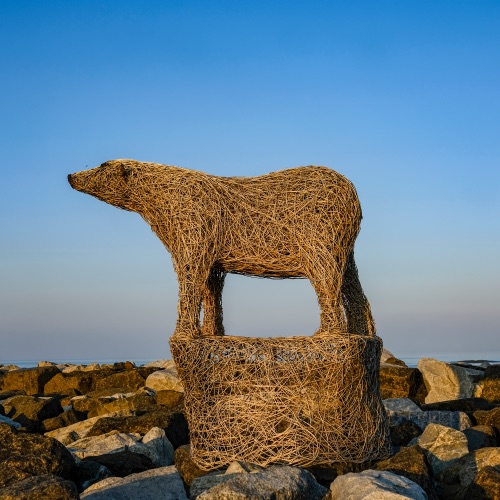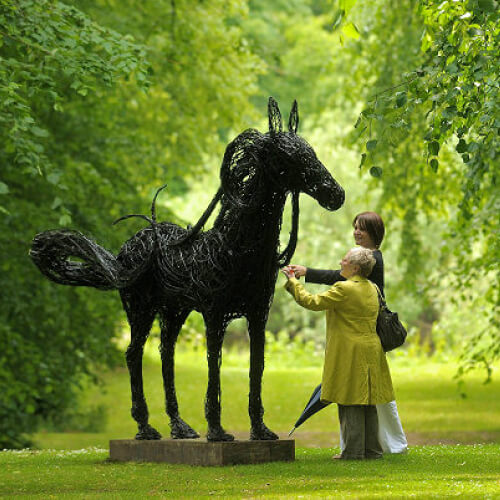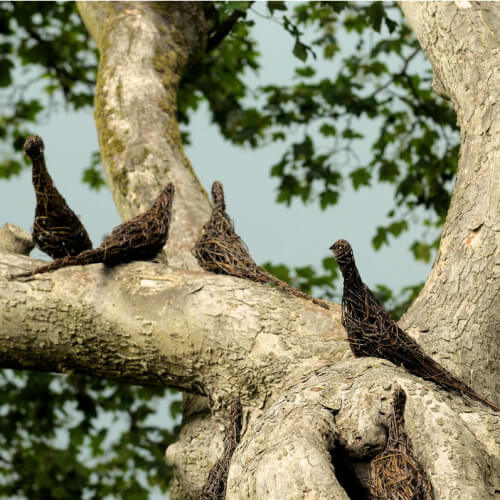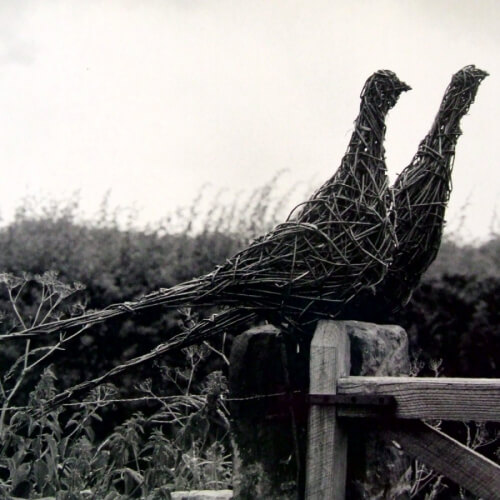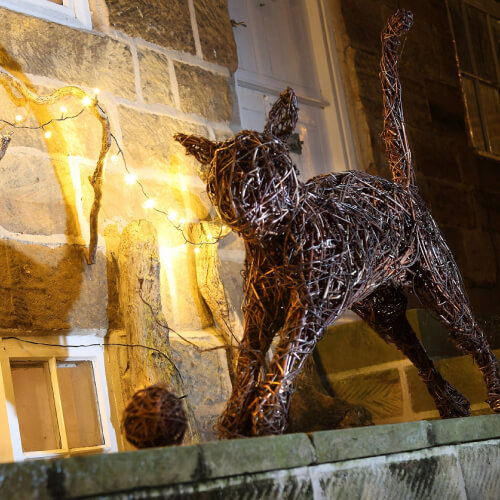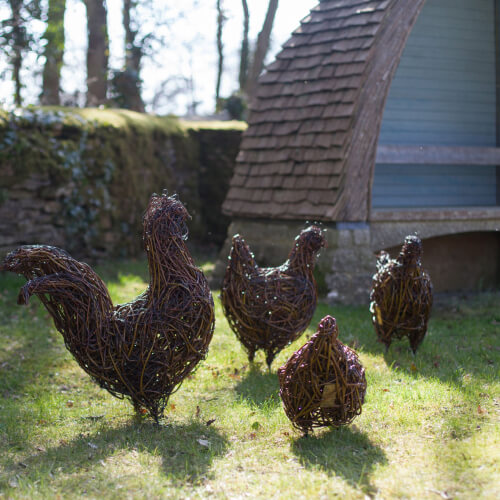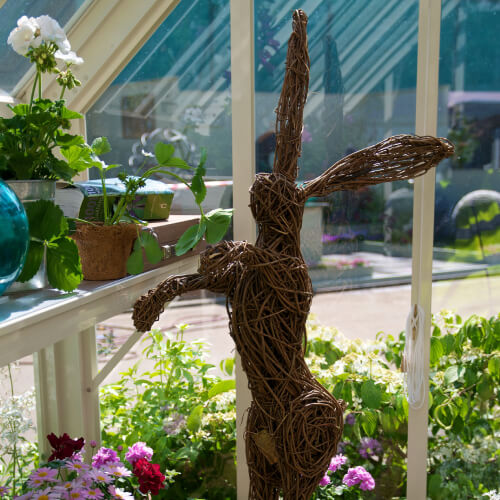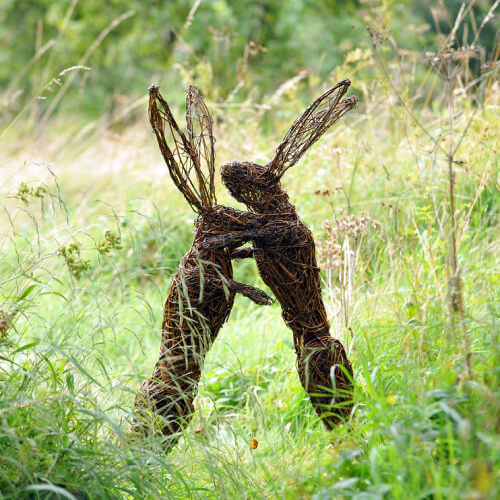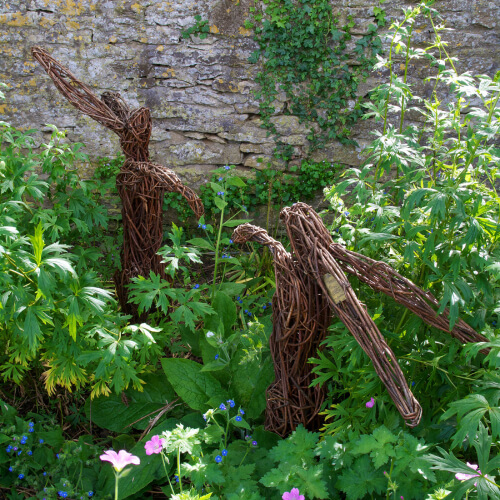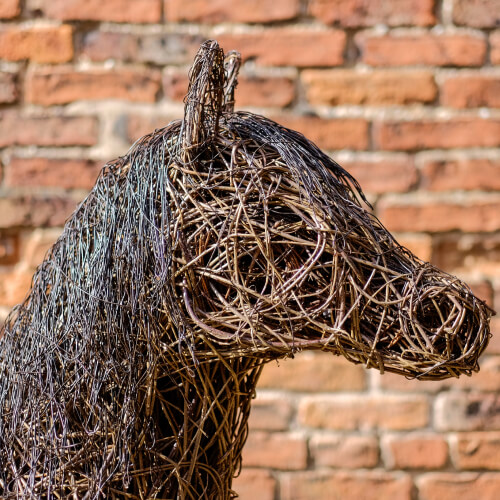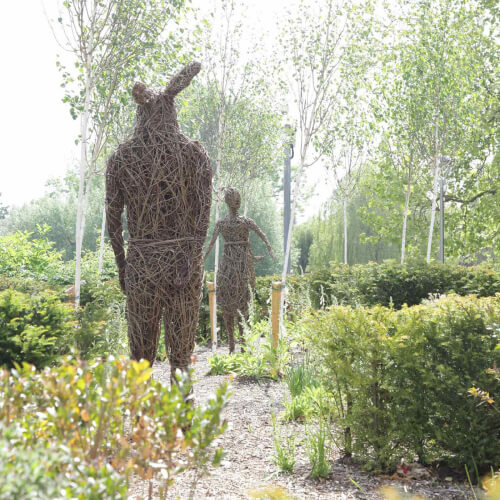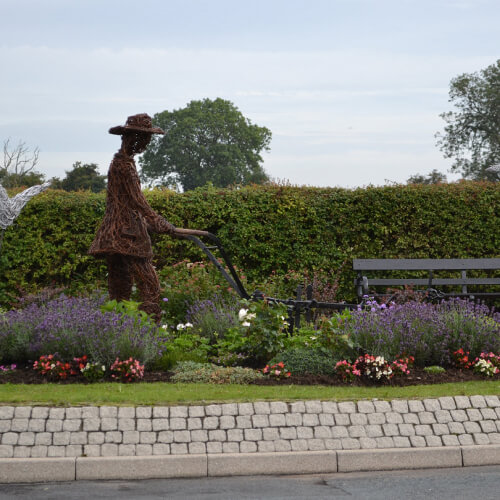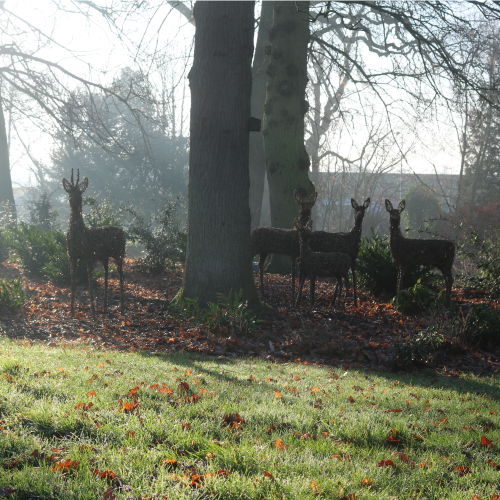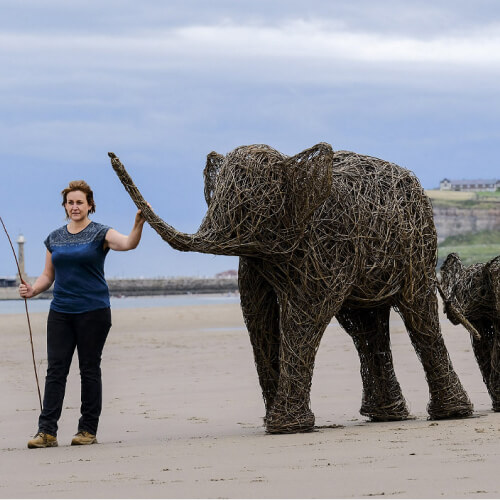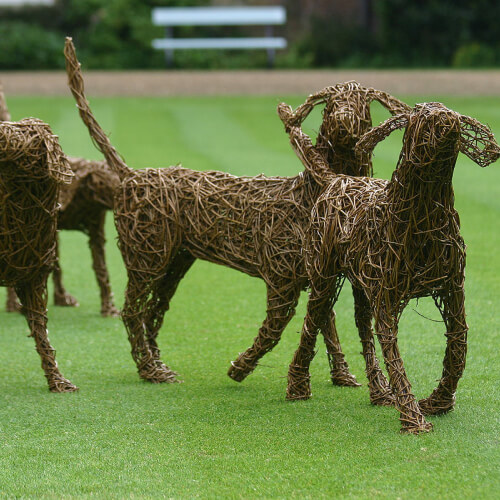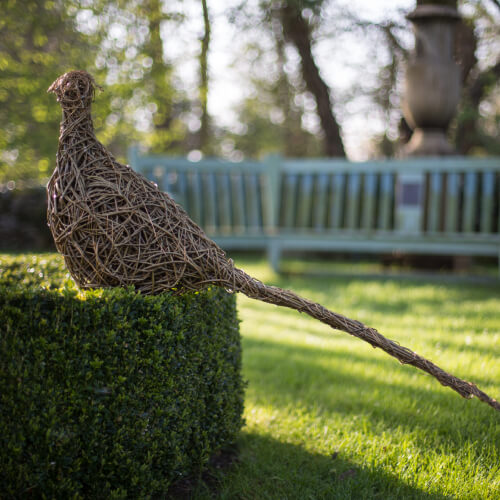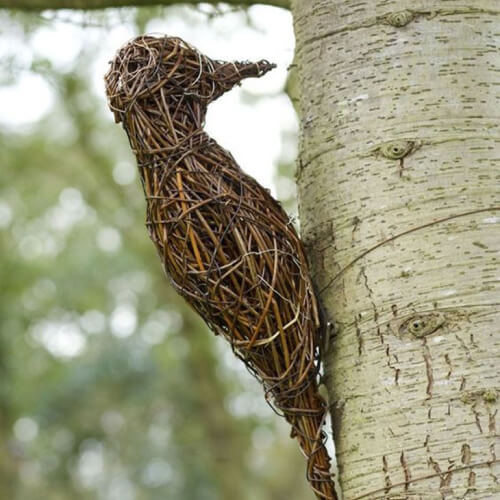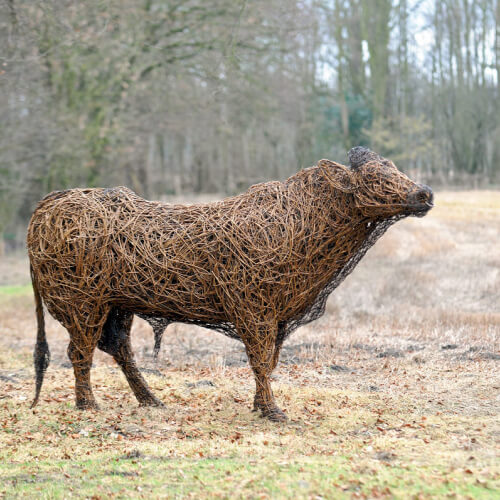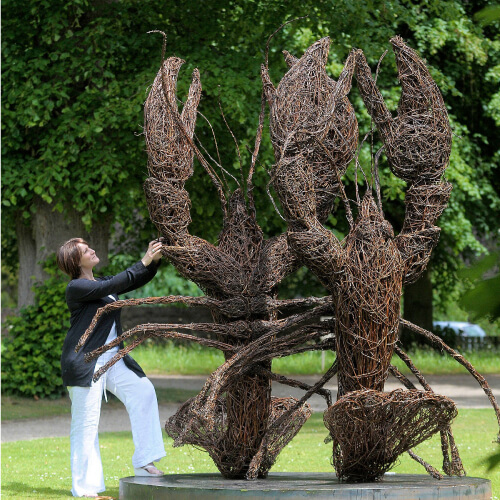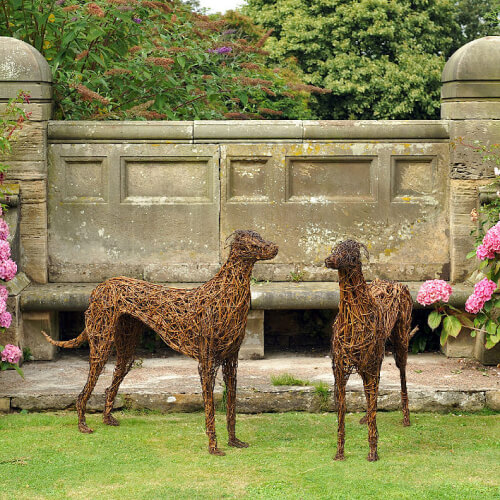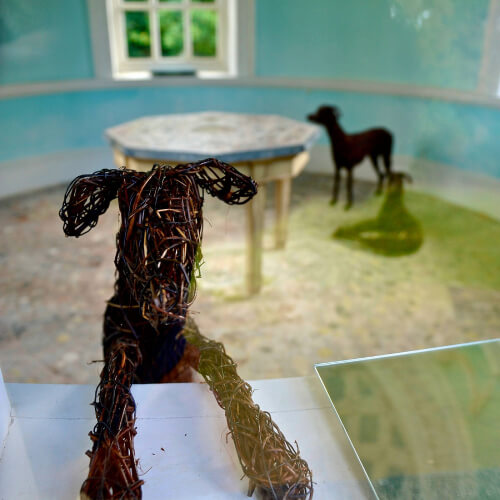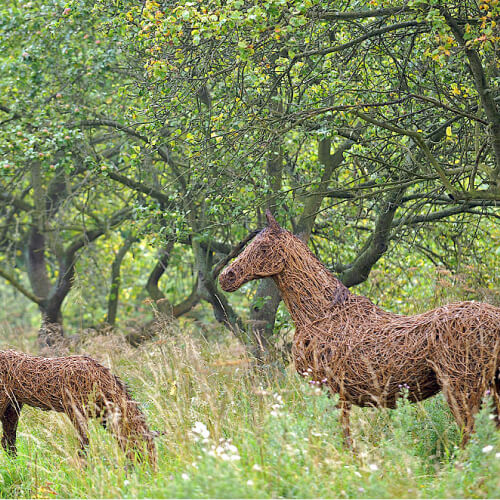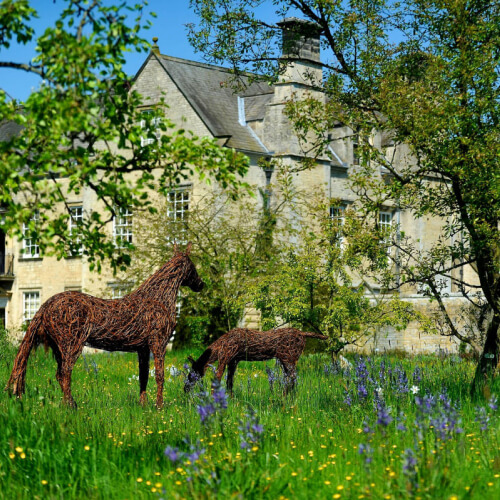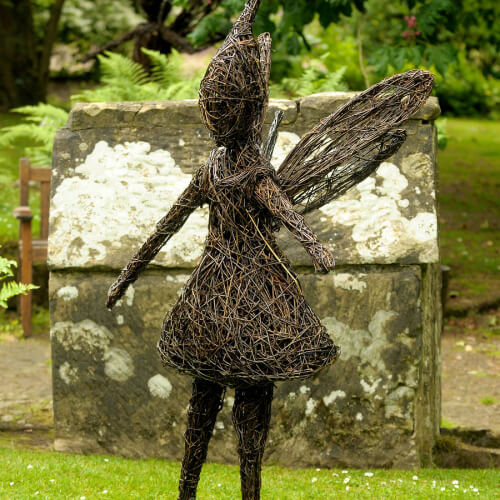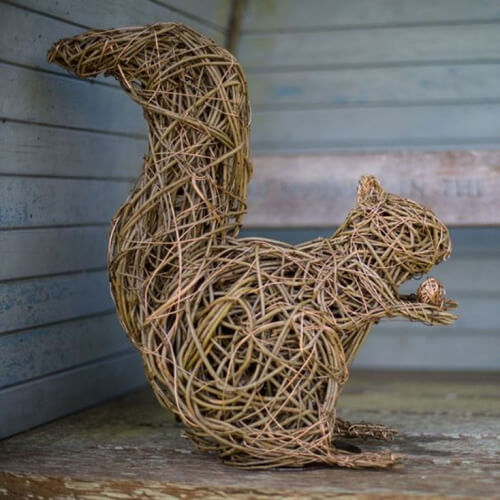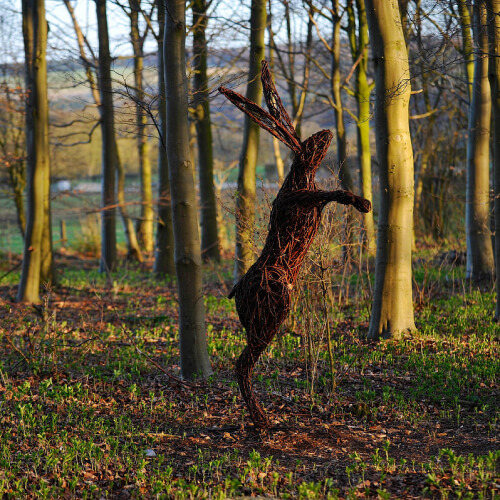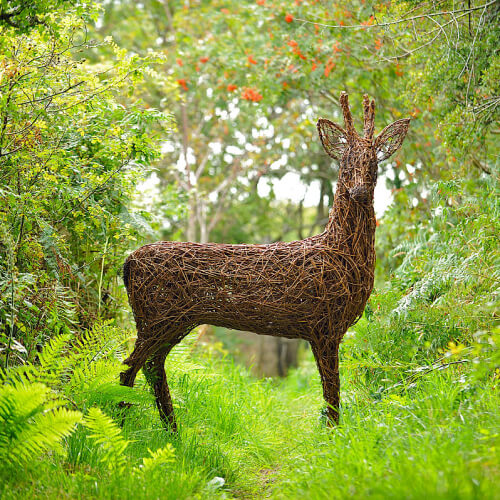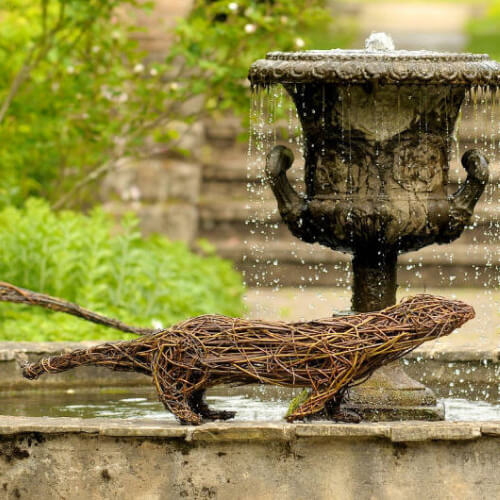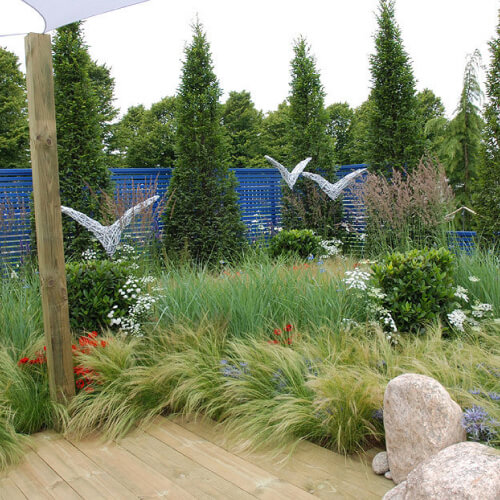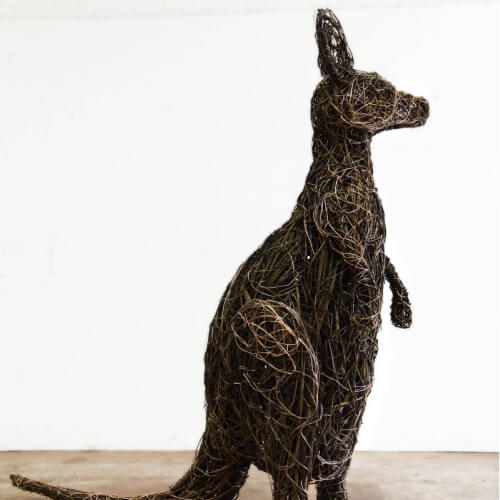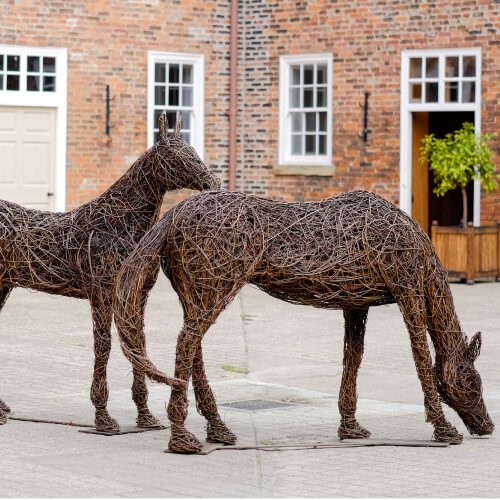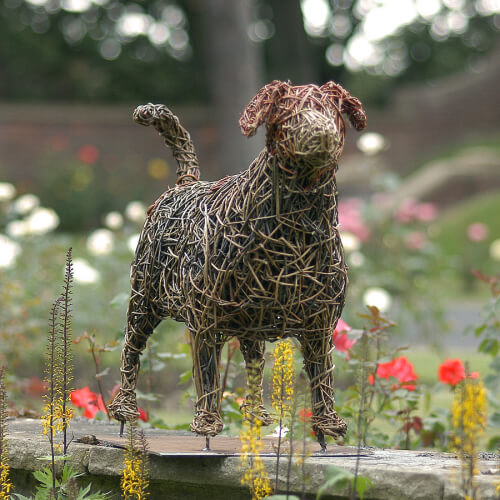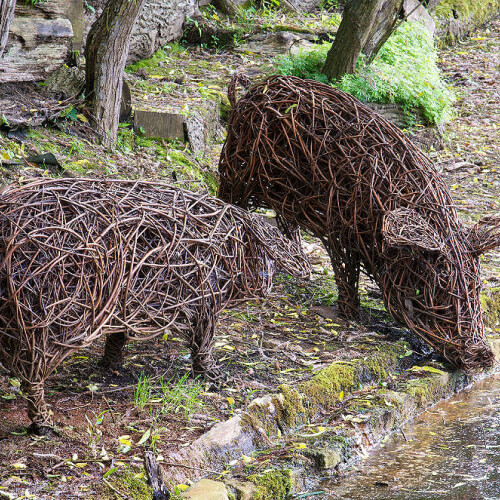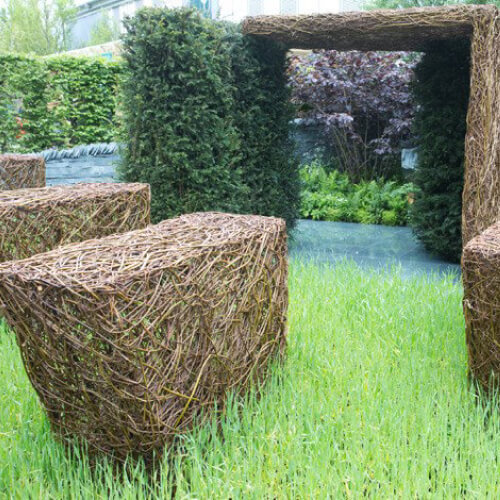“I just love willow,” says Emma of the material she started her career with. “It’s a completely natural product, it’s very versatile, it has a wonderful smell, and a real energy. Working with it is almost like drawing in wood – each willow withy tapers naturally, as a line in pencil does. It has an ethereal quality, yet still gives solid shape, form and structure.
“The finished product needs a little more care than the metal versions, depending on the environment it’s in, but look after it, and it’ll last beautifully for years.”
Emma buys the willow in bundles from Musgrove Willows on the Somerset Levels. “I enjoy working with this long-standing family business – they know their product inside out, and they know what I need,” she says. She soaks the length of willow, know as ‘withies’, in water in cattle troughs for up to a fortnight, changing the water several times along the way, then allows it to dry naturally overnight. This ‘rests’ the withies, making them more supple when she comes to weave – and that’s all done by hand, with only a pair of secateurs to tidy any loose ends on the finished piece . Once completed, she may add detail by threading in a few bronze or steel wires.
Finally, Emma sprays the sculpture with a couple of coats of equal quanitites of linseed oil and turps, giving it a rich gloss, feeding the wood and helping to protect it from the elements. Many of Emma’s willow pieces are displayed outside – she suggests that the owner treats them with the linseed oil and turps mixture to prolong their lives – and in some environments, bringing them inside over the winter will make them last longer. With a little love and care, each willow sculpture will last many years.
